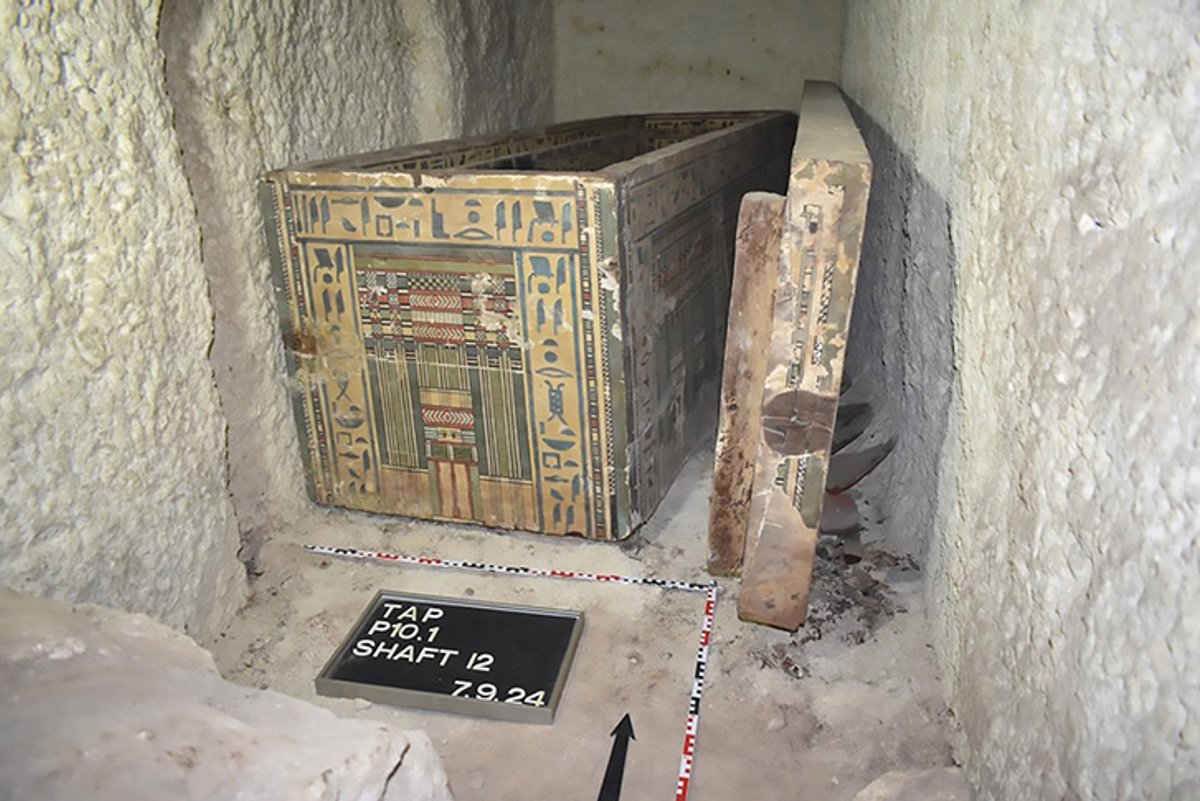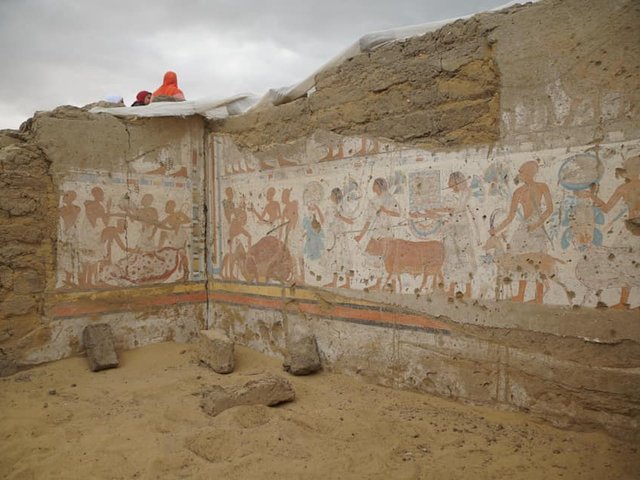Archaeologists working in Egypt have discovered the burial of a priestess named Idy, who lived 4,000 years ago during the country’s Middle Kingdom era. Her remains, beautifully painted coffins, and funerary objects were found at the bottom of a hidden shaft in the tomb of her father, Djefai-Hapi I, a regional governor of Asyut, 320km south of Cairo.
“The discovery is extraordinary, both aesthetically and scientifically,” writes Jochem Kahl, an Egyptologist at the Freie Universität Berlin, in an article on the university’s website.
Kahl, who directs the excavation project, and his colleagues first began clearing the previously unknown shaft in the tomb of Djefai-Hapi I in 2022. Over the course of three field seasons, the joint Egyptian-German team dug 14m down the shaft until they reached a side room sealed with stones. This turned out to be Idy’s burial chamber.
Ancient robbers had already entered the chamber, stealing Idy’s jewellery and every metal object they could find, but many artefacts remained untouched. Significant among these finds are two nested coffins, each weighing around 200kg-300kg, and bearing elaborate painted decorations.
“Idy’s coffins and their decoration surpass contemporary objects in their craftsmanship and tie with the outstanding quality of texts and images in the tomb of her father Djefai-Hapi I,” Kahl writes.
The coffins are decorated with painted ritual objects, hieroglyphic lists of offerings and titles, and religious inscriptions from the Coffin Texts—a collection of spells meant to help and protect Idy during her journey through the afterlife realm. This large number of texts “will allow for wide-ranging conclusions on the role of women and the transfer of knowledge in Ancient Egypt,” Kahl writes.
Kahl and his colleagues also discovered Idy’s canopic jars—four vessels made to contain the priestess’ lungs, liver, intestines and stomach, removed during the mummification process—along with wooden statues, a dagger and food offerings. The burial chamber also contained Idy’s bones and pieces of her clothing, damaged by the ancient looters. Initial studies of these remains suggest that the priestess died at around the age of 40, and experienced problems with her feet.
Goddess—and lady of the house
Idy’s titles, written on her burial equipment along with her name, reveal that she had been a “priestess of Hathor”—Egypt’s goddess of love, motherhood, music and dance—and a “lady of the house”, showing that she managed her household and held a high position in society. She is the only known daughter of Djefai-Hapi I, whose role as regional governor gave him great power at Asyut, an important strategic and trading centre, located between the ancient cities of Memphis and Thebes.
As well as being a prominent figure in his lifetime, Djefai-Hapi I, who lived around 1880BC, was deified by the ancient Egyptians, keeping his memory alive for centuries. His tomb at Asyut—one of the largest non-royal tombs known from this era of Egyptian history—bears extensive painted decorations, and features chambers cut deep into the rock, some with ceilings more than 11m high.
“The tomb was very well-studied and it is not uncommon for family members to be buried in the vicinity of a high official’s grave,” says Campbell Price, the curator of Egypt and Sudan at the Manchester Museum (who was not involved in the research). “So it is a surprise to encounter a previously undetected architectural feature, and for it to contain a complete burial. This will no doubt add to our knowledge of burial practices during the Middle Kingdom.”





